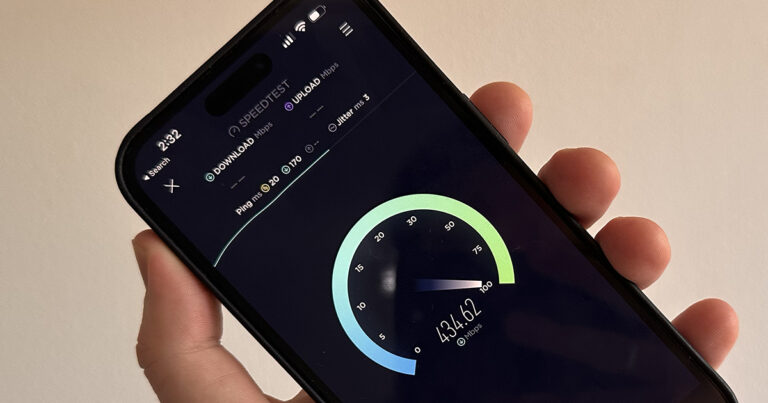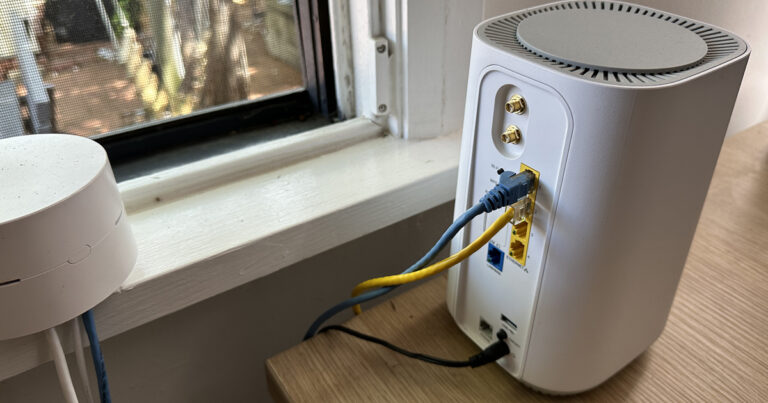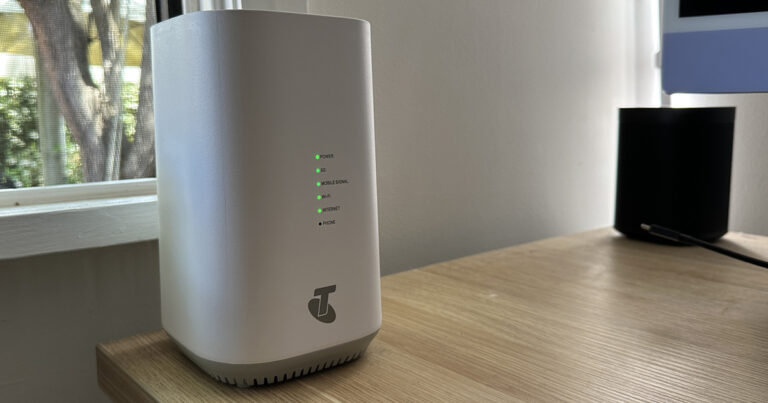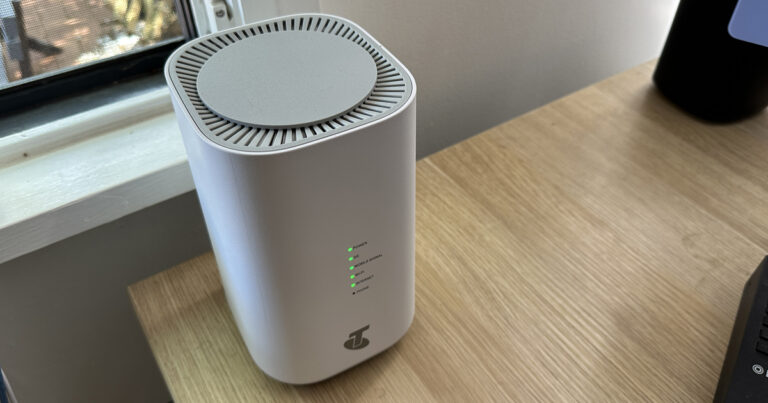I've had 5G home internet for a year, and it still hasn't killed my plants.
Telstra 5G home internet: A one year review
It's now been over a year since I ditched the NBN for Telstra 5G home internet, and for the most part, it's been a great experience. I'm getting much faster speeds than I'd get on the NBN if I were spending the same money.
Given that I'm still using Telstra's 5G home internet, it's easy to assume that I'm a fan - and I am. As long as my quality of service stays and the price stays the same, I'd be happy to stick with it. At the same time, that doesn't mean Telstra 5G home internet will be the right fit for everyone.
So after one year, here's everything I've liked and disliked about Telstra 5G home internet.

What I like about Telstra 5G home internet
Value: Telstra 5G home internet costs $85 per month, which is effectively the starting price of an NBN 100 plan. While 5G home internet speeds are prone to fluctuation, in the course of a year, I haven't really seen speeds under 100Mbps. Conversely, I regularly get speeds well above 300Mbp, and on a good day, I can get 500Mbps and faster.
To get these kinds of speeds on NBN, I'd need to fork out for an NBN 1000 plan. At full price, these sell for at least $129 per month. Even the cheapest NBN 250 plans will set you back at least $109 per month.
As such, getting 100Mbps as a baseline with the potential for faster connectivity for $85 per month is a bargain.
I've also found I consistently get upload speeds of over 50Mbps. The only consumer-grade NBN plan that offers these kinds of upload speeds is NBN 1000, which again, starts at around $129 per month.
While Telstra doesn't offer unlimited data on 5G home internet, I've found the 1TB allowance has been more than enough for me. In over a year, I've only gone over 50% of my allowance two or three times. You'd have to be a very demanding user for this to be an issue.
Easy to try: Trying Telstra's 5G home internet is a relatively risk-free affair. You get your first month free, so there's no need to cancel your NBN immediately to avoid paying two bills. The plan is also contract-free, so if it stops suiting your needs, you can just leave and go back to NBN or swap to a different NBN alternative. You'll just need to return the modem.
Wide coverage: Telstra's 5G network covers over 80% of the population now, so there's a good chance you're in a coverage area.

What I dislike about Telstra 5G home internet
Occasional dropouts: Every now and again - once every two-to-three weeks on average - my Telstra 5G home internet will cut out, and I'll need to restart the modem to fix it. This has been an ongoing issue over the course of the year, and while it's not the end of the world, it can be a bit annoying when it happens during a Zoom call.
Admittedly, my old Superloop NBN service also needed me to restart the modem every now and again, but this is a more prominent issue.
Speed inconsistency: Since 5G home internet is powered by a mobile network, it's far more prone to congestion than NBN. Sometimes I'll get 100Mbps, others I'll get 500Mbps. While 100Mbps is still great, that's a pretty big spread - you can't just expect to get the maximum speeds all of the time. While congestion is an issue on NBN too, your speed takes a much smaller hit during busy hours.
Latency: Another mobile network drawback is higher latency. I typically get a ping of between 20ms to 30ms on Telstra 5G home internet. On fixed-line NBN, you should typically get around 10ms. For me, 20ms to 30ms is perfectly acceptable, but it may not be for you if you regularly play fast-paced online games.
Limited capacity in each area: Telstra will only sell a limited number of 5G home internet services per postcode to avoid congestion. While this is good for me, it does reduce the number of people 5G home internet is a viable option for. Last time I checked, Telstra is no longer accepting sign-ups for 5G home internet in my suburb.
The modem needs better instructions: The bundled modem you get with your Telstra 5G home internet plan is great. It supports WiFi 6 and it covers my entire house despite being at one end of it.
But while the modem works well, Telstra's documentation leaves a lot to be desired. The quick start guide doesn't give you any real information on how to reconfigure the modem, if you want to change your WiFi name for example.
This can complicate matters since there are settings you'll want to change. By default, the modem combines to 2.4Ghz and 5Ghz bands into a signal WiFi and automatically decides what device should be on what channel. The problem with this is that speeds max out at about 100Mbps on 2.4Ghz.
If you really want to take advantage of 5G speeds, a device needs to be connected to the 5Ghz band - but the modem doesn't always know what device should go on what band. For example, it kept putting my Xbox on the 2.4Ghz band. The only way I could get it on the 5Ghz band was by creating two discrete options.
Should I try Telstra 5G home internet?

If you're unhappy with your NBN there's very little reason not to try Telstra 5G home internet. Telstra is still running a free month trial so you don't even need to cancel your NBN while you test it out. I've largely been happy with my experience, and despite a few quirks, I'm still using it over a year later.
How does Telstra 5G home internet compare?
Telstra being Telstra, it's unsurprisingly one of the more expensive options for 5G home internet. At the same time, you're paying more because you're getting faster speeds.
The more affordable 5G home internet plans around - those the likes of iiNet, TPG, and Vodafone - are capped to speeds of 50Mbps or 100Mbps. Telstra 5G home internet, by comparison, offers download speeds of over 500Mbps on a good day.
Telstra is the only provider to have a data cap on its 5G home internet plan, but you still get 1TB each month. This should be more than enough for most households, but if you go over, you won't pay extra. Instead, your speeds will be limited to 25Mbps.
Here's a look at the cheapest 5G home internet plans on the market right now.
Related Articles






